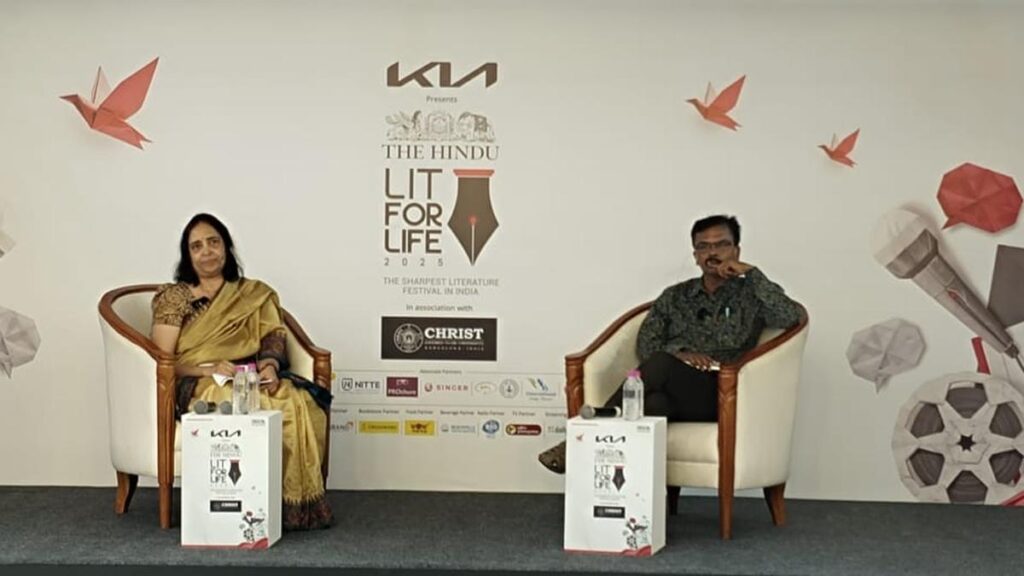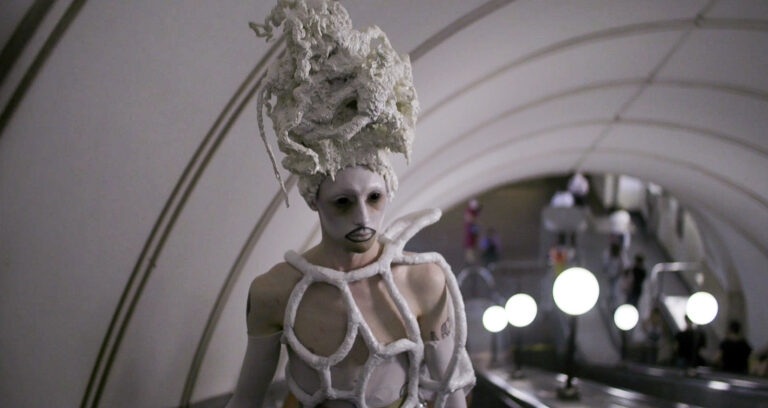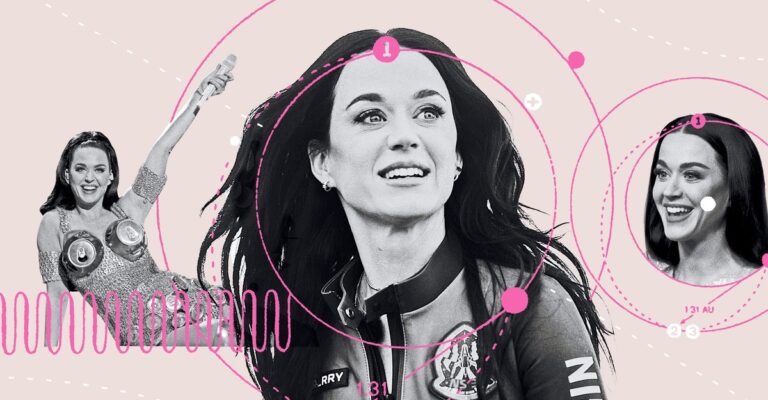

Perundevi, in conversation with Bogan Sankar on “How Modern is Modern Tamil Poetry?” at The Hindu Lit for Life 2025
| Photo Credit: M. Srinath
When did the journey of modern Tamil poetry begin: with the capturing of the “the present” by Bharathi in his free verses or the penning of stray verses (thanipadalkal) — traditional in form and modern in content — by poets like Kalamegam?
Also see: The Hindu Lit for Life 2025 Day 1 LIVE
Perundevi, in conversation with Bogan Sankar on “How Modern is Modern Tamil Poetry?” at The Hindu Lit for Life 2025, touched upon the emergence of modernism. She said though it was difficult to define the period of ‘modern’ in Tamil, beginning with Bharathi, the constant trait of dealing with the present (nikazhkanam) is discernible in the works of poets such as Na. Pitchamurthy and Ka.Na. Subramaniam in the 1930s and 1940, then in Ezhuthu magazine that was run by C.S. Chellappa in the late 1950s to 1960s, and subsequently, in those of poets like Athmanam.

“They captured the sense of contradiction and complexity, marking the modern,” she said, and read out poems of Athmanam to reiterate the point that “there is still a faith in love.” But this idea of “faith in love” is subsequently lost, as we can see in recent poetry. Also, feelings of angst, dread, and alienation have found a distinct voice in modernist poetry, as in the literature of other languages.
Bogan Sankar, who felt that thanipadalkal could be the pioneer of modern Tamil poetry, said it had an audacity in content and expression. “Poetry need not express only lofty ideas and emotions. It is more individualistic, humanistic, and can even be about human weaknesses,” he said.
He also explained how modern poetry broke with the traditional way of placing a particular theme in a particular landscape. “It is not as if that separation of lovers should be dealt with only in the Palai landscape (Thinai). Anything can be written under any circumstances. Modern poetry also unseated god and placed humans in his place,” he said.
‘Turning attention to small objects’
Perundevi, citing a poem of Gnanakoothan (‘Mesai Natarajar’), explained how the human subject has increasingly replaced the locus of god, who became either absent or was reduced to a mere object.
She also explained how modern Tamil poetry has turned its attention to small objects, events, and phenomena. In supporting her point of view, she cited C. Mani and Devadachan, among others. She also drew attention to the incoherent human subject, constructed in modern Tamil poetry, which deals with everyday life and responsibilities toward this world.
Bogan Sankar said though modern poetry and poets were subjected to criticism for its content and format, it became a norm only after the 1970s.
Though Vanampadi left a mark in the modern poetry movement, it was criticised for its “lack of depth.”

He recalled writer Charuvahan’s criticism that modern poetry was largely a middle-class affair, nihilistic in its expression and suffered a lot of limitations. The view was counted by another poet Piramil.
“But no one could deny Vanampadi’s role in popularisation and democratisation of modern poetry,” he said.
When asked whether there was a need to learn traditional poetry before switching over to free verse, he said the question had been raised in the past too. “Only a new format could effectively convey a new feeling. Prosody is not necessary in modern times. It no longer finds a place in the curriculum,” he said.
He said only poetry could carry forward the grammar of literature and not other literary forms.
The Hindu Lit for Life event is presented by KIA India and is in association with Christ University. Associate Partners: LIC, RR Donnelley, Blue Star, Brigade Group, NITTE Deemed-to-be University, PROchure, Singer, Chennai Port Authority & Kamarajar Port Ltd, Uttarakhand Tourism, Vajiram and Ravi, Indian Bank, Akshayakalpa and ICFAI Group. Realty Partner: Casagrand. Bookstore Partner: Crossword. Food Partner: Wow Momo, Beverage Partner: Beachville, Radio Partner: Big FM, TV Partner: Puthiya Thalaimurai Gift Partner: Anand Prakash. Supported by: US Consulate, Chennai, Water Partner: Repute
Published – January 18, 2025 02:47 pm IST



